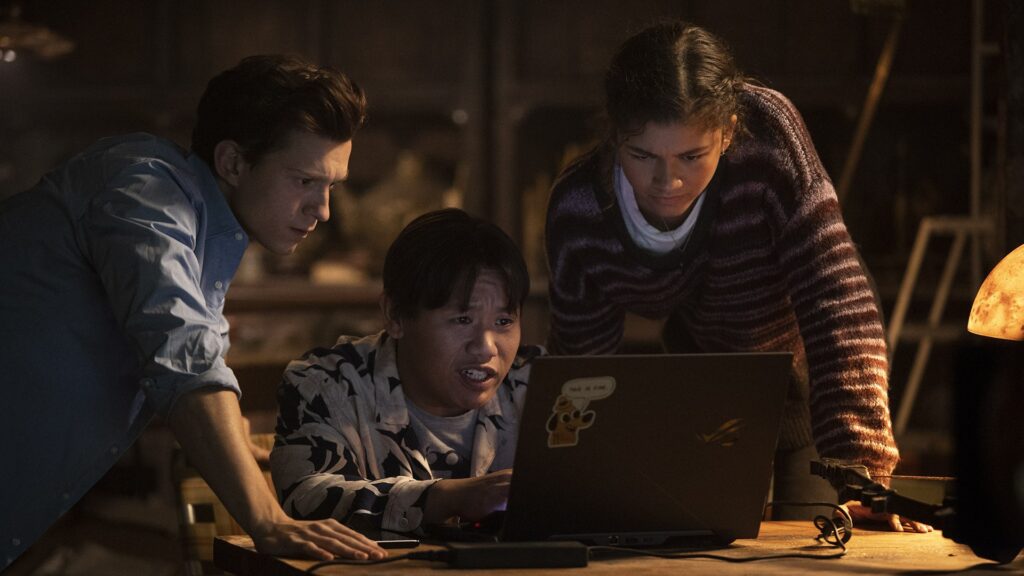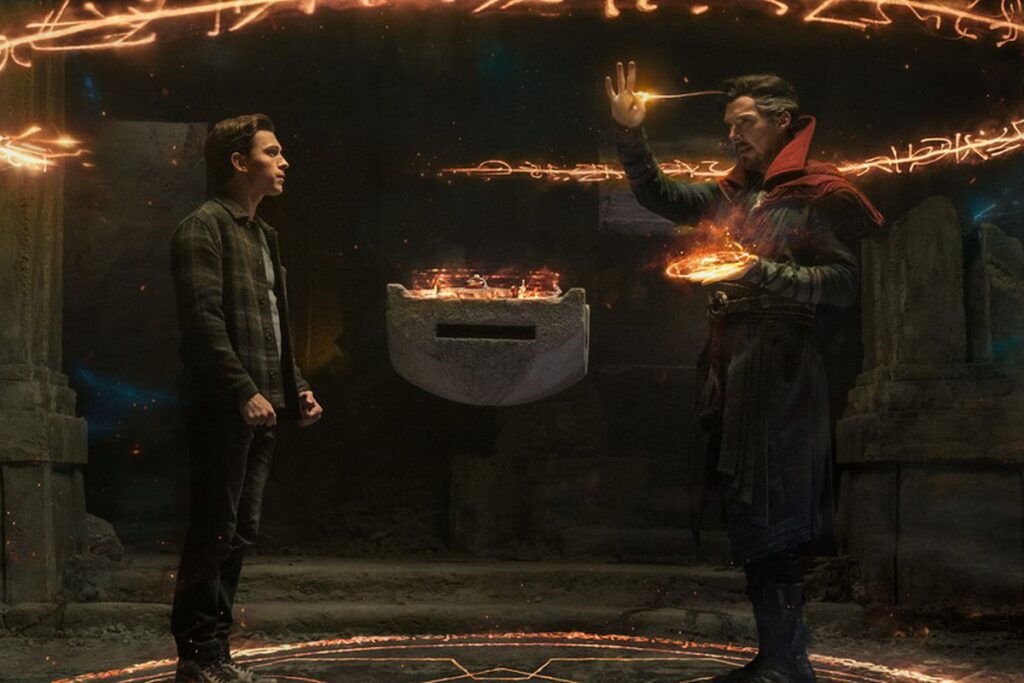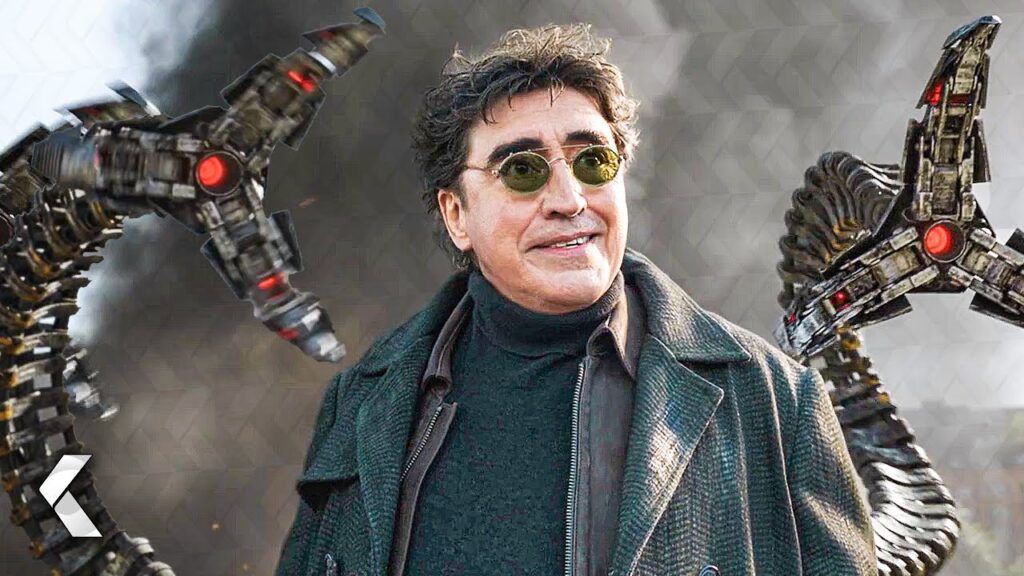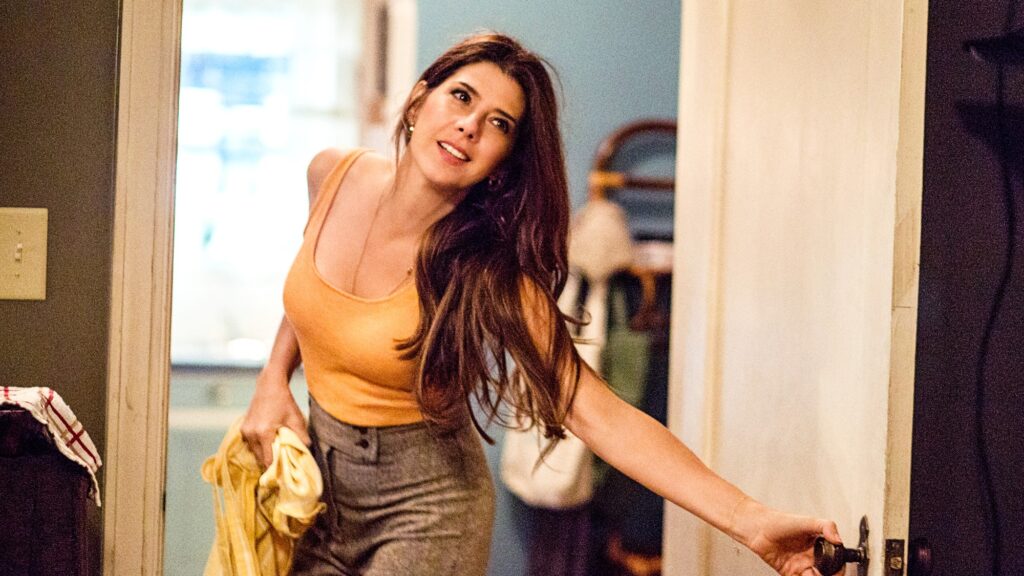
The twin cornerstones of the Marvel Cinematic Universe (not to be confused with the six infinity stones) are fan service and self-reference. Fan service, in that the primary purpose of these movies is satisfaction—not telling satisfying stories, but catering to their audience’s collective wants. And self-reference, in that the most efficient method of achieving this goal is to cram each picture with copious easter eggs, cameos, and callbacks, the better to flatter viewers’ knowledge and inspire periodic bursts of applause. The point of new installments is to remind people of older ones. The MCU is arguably the most successful global franchise in the history of popular culture, and its success derives from how it operates as a cumulative series of homework assignments.
So it’s fitting that Spider-Man: No Way Home—the third entry to center on Peter Parker, everyone’s favorite science nerd turned friendly webslinger, and the whopping 27th episode of the MCU overall (with another half-dozen films slated for theatrical release over the next two years)—finds its hero applying to college. (Never mind that Tom Holland, the talented British actor who again plays Peter with an appealing combination of gawkiness and sincerity, turned 25 this past summer; proper aging is the least of Marvel’s continuity concerns.) Sure, the movie that bears him carries the hallmarks of modern fantasy: warped spells, fractured universes, toppled buildings, freighted battles. But it is first and foremost a history lesson—a crash course in Spider-Man lore designed to reward viewers for their continued attention and scrupulous studying. If the past two decades of comic-book cinema were the substance of the curriculum, No Way Home is the refreshingly easy final exam.
This is hardly a new mode of storytelling, even within the confines of the MCU itself; the time-travel plot of Avengers: Endgame doubled as a tour of the franchise’s most memorable sequences, like a live cover of a greatest-hits album. But No Way Home, which was directed by Jon Watts from a script by Chris McKenna and Erik Sommers, reaches back even further, leveraging Marvel’s corporate partnership with Sony in ways that are certain to enchant fans and confound novices. (It is here where I must disclose that this review contains spoilers, lest I risk the wrath of viewers who consume every piece of MCU-adjacent media with ravenous hunger, yet still complain when they uncover specific pieces of information.) Simply put, it’s a Spider-Man movie about Spider-Man movies.

Which is both enervating and exciting. In the abstract, No Way Home’s cyclical reliance on its own past veers toward artistic cannibalism. Continued world-building and expansion are essential components of franchise filmmaking, but the more you snake back toward prior chapters, the closer you come to eating your own tail. By their very nature, repetitions and reversions are anathema to the cinematic values of progress and invention. Old is opposite of new.
But here’s the thing: I like Spider-Man movies. I’ve liked them ever since 2002, when Tobey Maguire donned the red-and-blue spandex for Sam Raimi. Peter Parker, constantly torn between his solemn duty to protect the public and his private desire for his own happiness, is my favorite character in comic-book canon. (Raimi’s Spider-Man 2 is one of my favorite films ever made, period.) His feats of strengths and athleticism make him enviable, while his bookish demeanor and headlong romanticism make him relatable. I feel a connection to him, and to the many struggles he’s faced, that I lack with other superheroes. So in No Way Home, when a leathery Willem Dafoe showed up as Norman Osborn and confidently declared, “I’m something of a scientist myself,” the involuntary chill I experienced was less a matter of recognition than delight.
How on earth, you may ask, did Osborn get here? The faintly brilliant conceit of No Way Home—the gimmick that both catalyzes its narrative and provides an excuse for its pandering—involves importing the villains from earlier Spider-Man pictures into the already-crowded MCU, thanks to a cataclysmic rift in the multiverse (or something). This galactic glitch stems from a rare selfish gesture on Peter’s part. Secrecy has always been his great burden—it’s hard to form healthy relationships when you’re constantly disappearing whenever a siren goes off—but at the end of the prior sequel, Far from Home, his true identity was revealed to the world by J. Jonah Jameson (played again here by J.K. Simmons, no longer as a cranky-but-wise newsman but instead as an Alex Jones-like conspiracy theorist, complete with hacky alliteration and vitamin supplements). The opening act of this latest adventure explores the dire consequences of this unmasking; not only does Peter face legal peril (which he conveniently wriggles out of, thanks to a certain crafty blind lawyer whose appearance ups the MCU’s synergy to integrate its television series), but he also becomes a social pariah, and the public scrutiny he receives results in him, his girlfriend MJ (Zendaya), and his best friend Ned (Jacob Batalon) all being rejected from MIT. Wracked with guilt, Peter approaches his avenging colleague Doctor Strange (Benedict Cumberbatch) and asks him to use his magical powers to create a kind of mass Eternal Sunshine spell, wiping his existence from the memory of everyone except his loved ones. Things, as they tend to do, go awry.

The brunt of Spider-Man: No Way Home focuses on the cosmic, chasmic fallout from Peter and Strange’s interdimensional meddling, but before that point, the movie reminds us of what these Holland-led features do so well: comedy. Watts isn’t much of an action director—his set pieces are long, loud, and unmemorable—but here he again flashes a knack for screwball mayhem; the early scenes of Peter and his inner circle—which also includes his Aunt May (Marisa Tomei) and her on-again, off-again flame Happy Hogan (Jon Favreau)—scrambling to minimize the damage of Jameson’s scoop are brisk, chaotic, and very funny. A series of interrogations (led by Succession’s Arian Moayed) undercut their putative tension with sharp silliness, while a sequence of the characters frantically holing up in May’s apartment hums with the vibrant energy of a David O. Russell film, the camera careening through the tight space with giddy momentum.
The actors playing those characters are all skilled performers, and they’ve developed a warm, winning rhythm that helps camouflage their slightness. The romance between Peter and MJ, previously the subject of intense angst and anticipation, has settled into a comfortable groove, but while it’s nice that the screenplay doesn’t foist artificial complications upon them, it also flattens MJ into the role of the supportive and fretful girlfriend, despite Zendaya’s beguiling wryness. Meanwhile, Peter’s broader frustration at his doxing functions less as a genuine existential crisis than as a vehicle designed to motorize the plot, which, once Strange works his less-than-successful magic, quickly shifts into overdrive.
Before long, the roomy basement of Strange’s sepulchral mansion (“It’s literally the dungeon of a wizard”) becomes a sort of live-action rogues’ gallery, with prison cells housing past Spidey baddies from different cinematic universes. In addition to Osborn’s Green Goblin, we (re)encounter Dr. Connors (Rhys Ifans), now in giant-lizard form; Electro (Jamie Foxx), the energy magnet looking more svelte and sculpted than he did in The Amazing Spider-Man 2; Sandman (Thomas Haden Church), still somberly shifting into disconsolate grains; and (my personal favorite) Doc Ock, the tentacled mad genius played with slippery menace by Alfred Molina. (Sadly, Topher Grace’s Venom remains MIA, though Paul Giamatti’s Rhino at least receives a mention.) What follows is a predictable, pleasurable clash of forceful personalities, loaded with tension and surprise, and also leavened with arch references and winking jokes.

In addition to providing some playful humor and thrumming danger, this collection of supervillains animates the film’s central thematic concern: the inherent conflict between pragmatism and idealism. This divide is represented not by any of the antagonists themselves, but by Peter and Strange. The sorcerer is a gruff realist, insistent upon returning these poor unfortunate souls to their own timelines—and, we gather, their certain deaths—in order to swiftly restore balance to the universe. Peter, by contrast, argues for the possibility of redemption, and he vows to “cure” these foes of their supposed evil rather than discarding them as lost causes and collateral damage. It’s a faintly clichéd dynamic that nonetheless feels relatively fresh for the by-the-book MCU, contemplating a spectrum of villainy and decency as opposed to the familiar good-bad binary.
This philosophical divergence takes physical shape pursuant to the standard Marvel aesthetic, which is to say it’s flat, sloppy, and undistinguished. Watts may possess a light comic touch, but his hand in action sequences is heavy and clumsy; despite an ample budget and one noteworthy location, the movie’s many scenes of Peter running, jumping, and web-shooting possess little zip or wit. The happy exception is an early fight in the so-called Mirror Dimension, where Watts incorporates some of the trippy, Inception-style visuals that Scott Derrickson brought to Doctor Strange, and which concludes with Peter conquering Strange’s swirling magic by wielding something even more powerful: math.

Speaking of which, the chief mathematical operation of No Way Home is multiplication. It posits, not incorrectly, that three times the titular hero equals three times the fun. Spoiler warning aside, I hesitate to explicate the film’s biggest reveal (which has been shielded even from the trailers), though the sudden appearance of two particular actors will scarcely be a surprise to fans who follow the Marvel hype machine. Suffice it to say that, while this is hardly the best Spider-Man movie, it is surely the movie with the most Spider-Men. (Or maybe second-most, depending on how you quantify Into the Spider-Verse.)
“We need to work together,” Peter insists to his newfound cohorts. He’s not wrong, and No Way Home mines the concept of inter-franchise collaboration with delirious enthusiasm. The film’s ruthless exploitation of its own synthesis—a constant parade of pointed cross-references and smirking asides—is utterly shameless. It is also completely charming, full of clever gags and belly laughs. And it even acquires some third-act resonance, especially when a Spider-Man of yore reminds you of just how soulfully he can stare into the camera.
For all its pictorial dullness, Spider-Man: No Way Home is a deeply enjoyable movie, even if that joy is also disturbing. Here is a picture that succeeds not because it subverts the rigid constructs of corporatized entertainment, but because it embraces those constructs with such openness and zeal. That would seem to bode poorly for a medium that relies on continued innovation and experimentation for its survival. But maybe I’m looking at this all wrong; maybe there’s a different multiverse out there where studios take greater risks, and where Hollywood pushes forward instead of looking backward. If it does, then we can be confident that Marvel will expend all of its vast resources to find it—and to yank it back into our own safe, fun, rigorously controlled cinematic universe.
Grade: B-
Jeremy Beck is the editor-in-chief of MovieManifesto. He watches more movies and television than he probably should.
